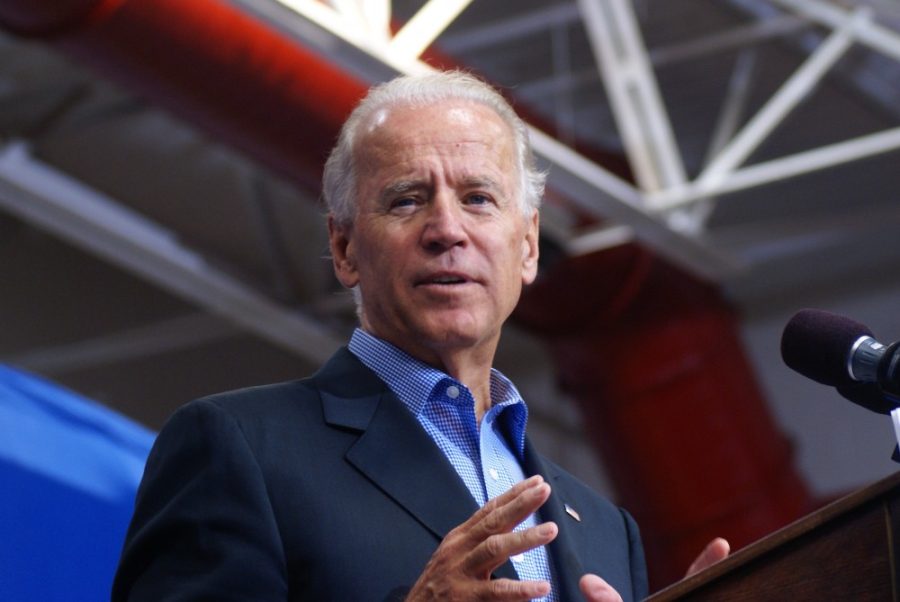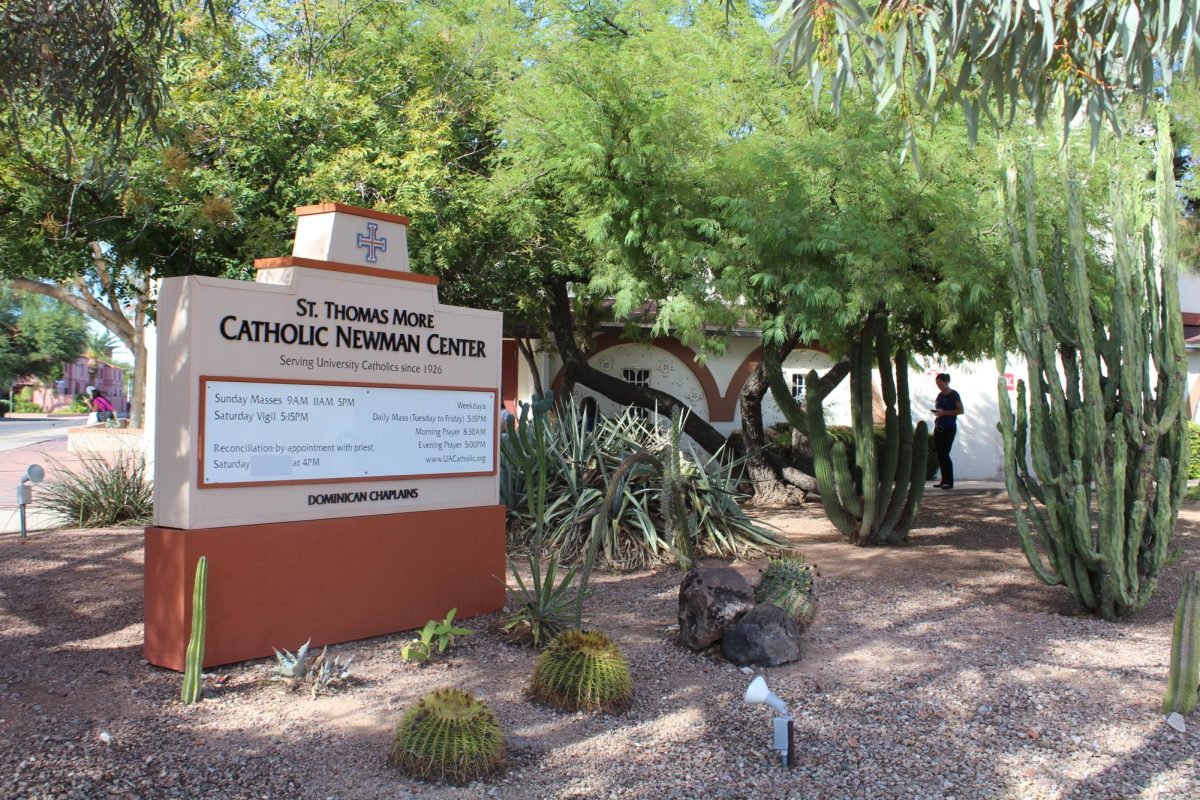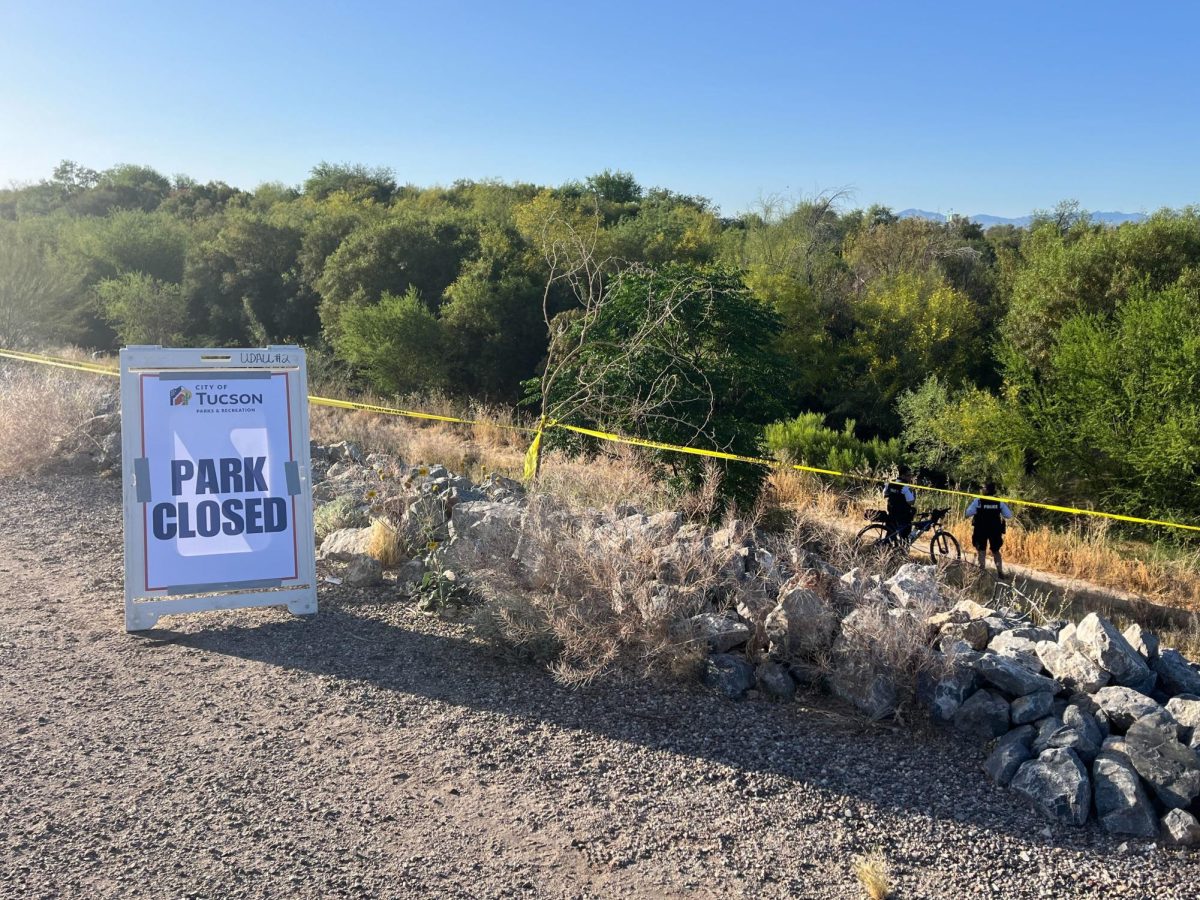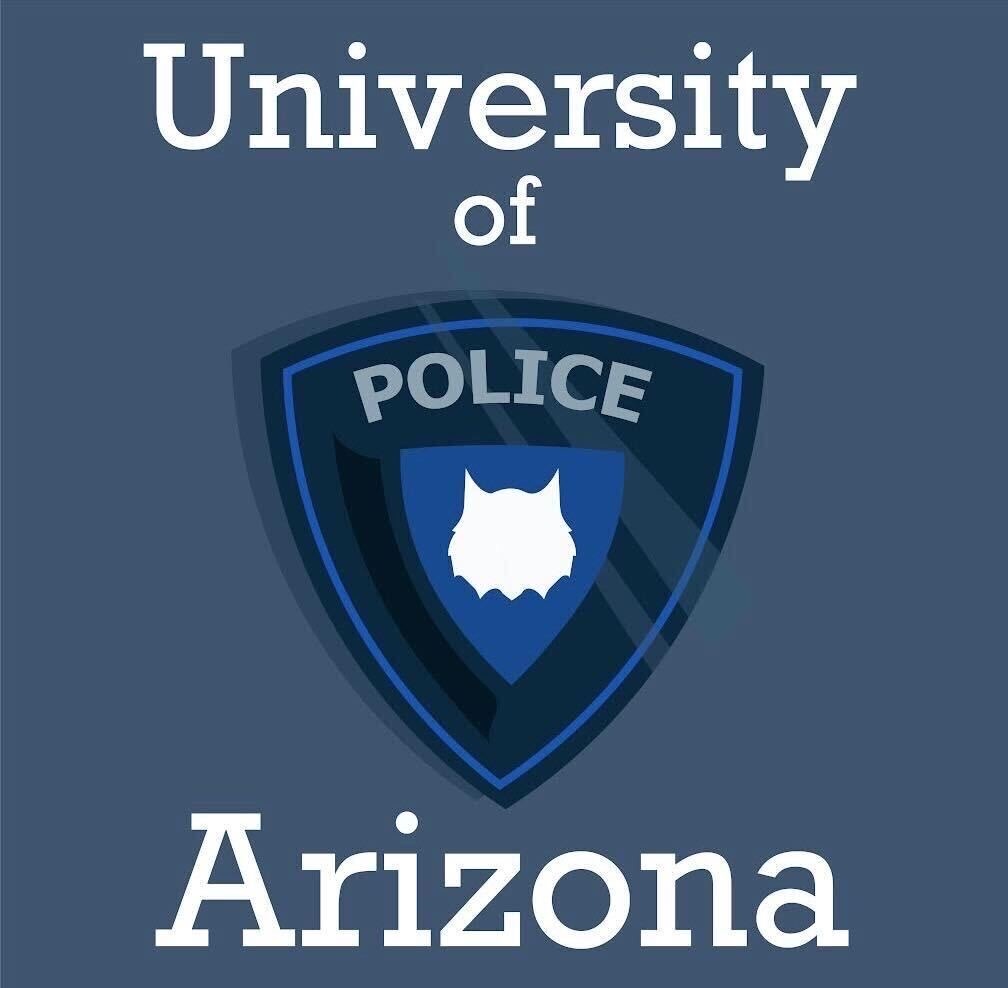Students in the UA Race Track Industry Program and the College of Engineering have created a prototype product intended to allow horse racing to be viewed from a camera embedded in the helmet of a jockey.
Kenleigh Hobby and David Matt, seniors in the College of Agriculture’s Race Track Industry Program, began looking for ways to improve the industry as part of a senior project and saw a need for improved technology in streaming video of the races.
Hobby said he believed horse racing has fallen behind other professional sports that offer viewers multiple camera angles to watch the action, such as football and NASCAR.
“A lot of other major-league sports have invested a lot of time in the fan experience because of the online atmosphere,” Hobby said. “Horse racing’s still stuck in the binocular era.”
Much of this is due to the challenges of putting a camera on a jockey. The primary concern is the jockey’s safety: Horse racing can be a dangerous sport, and numerous laws and regulations are in place to protect them while racing. These laws can make it difficult to make modifications to existing procedures and equipment.
Another major issue is the lack of space for a camera and the necessary equipment to transmit a live video signal back to a receiver on the track. Unlike car racing, where equipment can be contained in the trunk of a car, horse racing requires that the excess weight a horse carries be as minimal as possible, and jockeys must maintain a lower weight.
Faced with this technical challenge, Hobby and Matt went to the College of Engineering for assistance. Engineering students in a senior project program, including Stephen Nelson, Garret Weaver, Trevor West, Patrick Llull, Cedric Bosch, and Louie Benitez, teamed up with Hobby and Matt to design and build a prototype.
John Gruenenfelder, a computer science graduate from the University of Massachusetts who currently works in the Steward Observatory at the UA, also assisted the team.
The current prototype uses off-the-shelf materials, such as a Logitech brand camera. The helmet’s design enables it to contain all of the necessary technology to transmit video live back to a base receiver, including batteries, GPS and an onboard computer.
The unit, weighing about 100 grams, transmits the video and GPS information over Wi-Fi to standard, off-the-shelf routers that are used in homes and offices. It has a range of approximately 500 feet, and can “jump” from router to router without losing the signal.
The design does not compromise any of the safety features of the helmet. The only visible difference between the prototype and a typical helmet is the actual camera, which is embedded into the helmet, and a power switch/connector on the back.
The engineering team used a prototype to compete in the College of Engineering’s Design Day, and won second place in the Analog Design competition. It has been showcased and tested in Virginia, Kentucky, Florida and Maryland.
The team’s progress provided a basis for developing another model with customized parts, but added another challenge — creating a model that complies with the industry laws and regulations and finding racetracks that would allow the testing.
The team created EquiSight, LLC, to further research, design and market its products, and has worked with the Arizona Center for Innovation, a kind of “business incubator” provided by the UA that supports technology startups. Hobby and Matt have both taken out additional student loans to provide capital financing for the project.
So far, racetracks and entrepreneurs have expressed an interest in the camera, specifically Medusa, LLC, a Tucson-based defense contractor that EquiSight is working with to continue developing the product. Maintaining the integrity of the original design, but making it smaller, lighter and more robust, has been a focus of the collaboration, Nelson said. Hobby added that Medusa also plans to use the technology for defense purposes in coordination with law enforcement and the military.
EquiSight aims to have a functioning model ready by January 2013. While the initial focus will be horse racing, Hobby said he is looking to eventually expand the company into providing services to other sports that use helmets, such as football.
“Any helmet-based sport has the possibility of putting that viewer in the saddle or in the batting cage or in the huddle … everybody wants to see what the quarterback sees or what that batter sees, and we can kind of put you in that virtual experience.”









